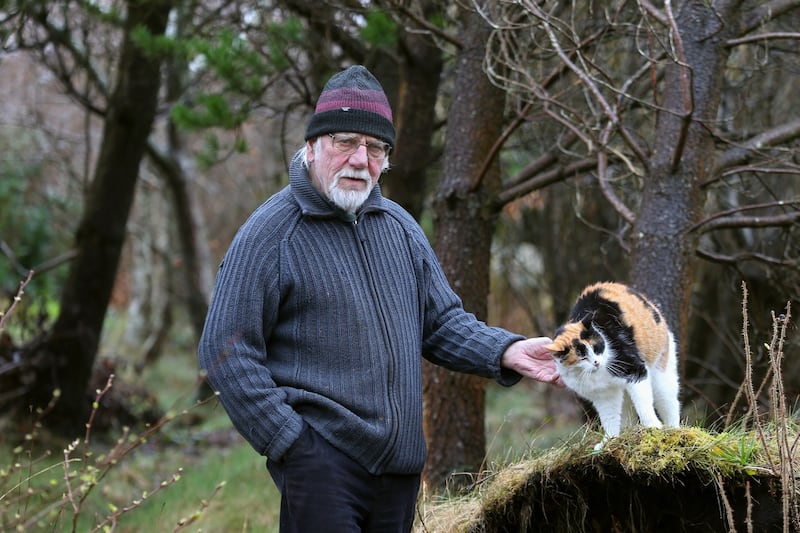In 2017, 17-year-old Shanti de Corte was in Brussels’s Zaventem Airport, about to embark on a second-level school trip to Italy. Islamic State detonated bombs that killed 32 people and injured 300 others. De Corte was physically unharmed but severely damaged psychologically.
She received treatment from a psychiatric hospital including numerous medications but nothing seemed to alleviate her depression and panic attacks. She made unsuccessful suicide attempts in 2018 and 2020, including one after being sexually assaulted in the hospital. In May 2022, aged 23, she was euthanised in her family’s presence. Details of her death emerged this week in the Belgian media.
Euthanasia advocates in Ireland often say that the term “assisted suicide” is unhelpful in the euthanasia debate because suicide and euthanasia are two very different things.
Instead, the two are often intertwined. This young Belgian woman tried to die by suicide twice and then received State assistance to end her life.
Pat Leahy: Have our politicians forgotten what happens when you lose control of the public finances?
‘The phone would ring and it would be Mike Scott from the Waterboys or Bono from U2. Everyone wanted to talk to my father’
Chris Packham: ‘I was a very angry young man, confused because of my undiagnosed autism. It had an enormous impact on my life’
Bashed tables, dad dancing and pizza: how the deal for a new government was done
In Ireland, we face a choice – to support an excellent but cash-starved palliative care sector and an even more underfunded mental health service, or giving in to despair and asking medical personnel to actively end people’s lives
A 2021 article in the Journal of Philosophy and Medicine, Euthanasia in Belgium: Shortcomings of the Law and Its Application and of the Monitoring of Practice, makes serious allegations about the Federal Control and Evaluation Commission for Euthanasia (FCECE). The commission reviews cases of euthanasia and if it determines that legal criteria have not been met, it can decide to refer the case to the public prosecutor who can then decide to initiate an official investigation.
The article describes the resignation in 2018 of commission member, neurologist Dr Ludo Vanopdenbosch, who approves of and has carried out euthanasia himself. He resigned because a case came before the FCECE that he claims did not meet one single criterion of Belgium’s euthanasia law but still could not secure the commission majority vote necessary to refer it to the public prosecutor. It involved an elderly man with Parkinson’s and dementia.
Belgium’s euthanasia law was passed in 2002. Up to 2019, 21,126 cases were reported to the commission, yet the first time a case was ever referred to the public prosecutor was in 2015 when an Australian company televised the euthanasia of a perfectly healthy woman in a care home.
Half the commission members are doctors, most of whom carry out euthanasia. The co-chair is oncologist Wim Distelmans, one of Belgium’s leading advocates of euthanasia.
Earlier this month, the European Court of Human Rights (ECHR) ruled on a case taken by Belgian Tom Mortier whose mother, Godelieva de Troyer, was euthanised without his knowledge. She had suffered from depression for 40 years.
There is an excellent 2015 article on the case by Rachel Aviv in the New Yorker magazine, which describes how de Troyer struggled to find three psychiatrists who would declare her a candidate for euthanasia. One said her decision was not mature and another, that she could still be helped.
[ Breda O’Brien: Botched Leaving Cert reform is worse than no reformOpens in new window ]
[ Breda O’Brien: Why are today’s children so full of anxiety?Opens in new window ]
Nonetheless, Distelmans approved her case. The article also describes how individuals have been euthanised in Belgium on grounds as diverse as autism, anorexia, borderline personality disorder, chronic fatigue syndrome, partial paralysis, blindness coupled with deafness, bipolar disorder, unsuccessful transgender surgery, and because they are “tired of life”.
The ECHR pointed out carefully that it was not ruling about whether there was a right to euthanasia, but whether procedures were followed correctly according to Belgian law. It found against Mortier in three substantive aspects, dismissing the challenge to the Belgian legal framework.
However, it found unanimously that the State had failed to fulfil “its procedural positive obligation, on account of the lack of independence of the Federal Board for the Review and Assessment of Euthanasia and the length of the criminal investigation in the case”.
‘Without the means to live, the right to die becomes the dangerous default’
The Belgian government stated it was the custom that a directly involved doctor would withdraw from the assessment of a case. The ECHR found that Distelmans had not withdrawn but voted on the de Troyer case he himself carried out.
When euthanasia was introduced in Belgium 20 years ago, those who opposed it were accused of scaremongering when they said the grounds would keep expanding and oversight would be next to non-existent. Now, since 2014, Belgium even has a law where minors (with no lower age limit) can be euthanised.
Where euthanasia is legal, insurance companies often offer to pay for euthanasia but not for much-needed treatment. The American Association of People with Disabilities (AAPD) dismisses the “romantic notion” that euthanasia is about comfort at the end of life. Euthanasia laws give insurance companies and doctors new rights, too – the right to withhold treatment. As the AAPD says, “Without the means to live, the ‘right to die’ becomes the dangerous default.”
For example, more and more people in Oregon (where euthanasia is legal) cite fear of being a burden as a reason for choosing euthanasia. In 2020 it was 53 per cent.
In Ireland, we face a choice – to support an excellent but cash-starved palliative care sector and an even more underfunded mental health service, or giving in to despair and asking medical personnel to actively end people’s lives.




